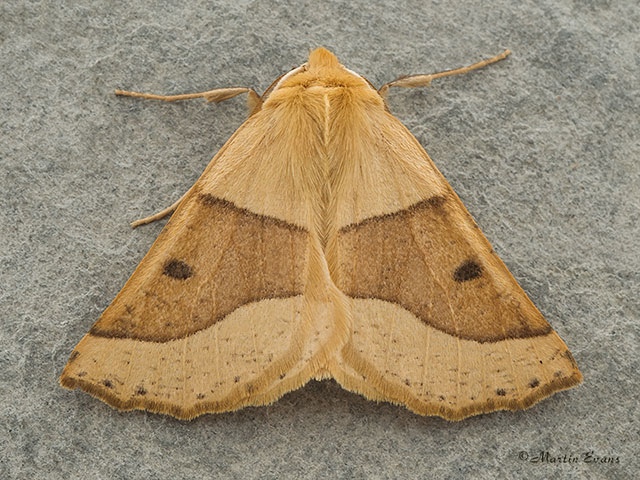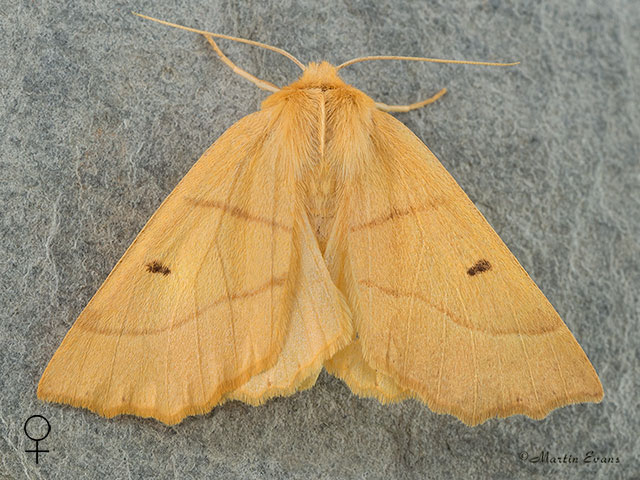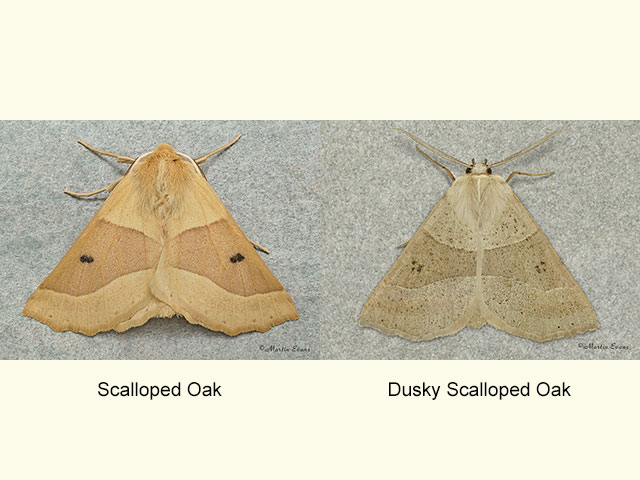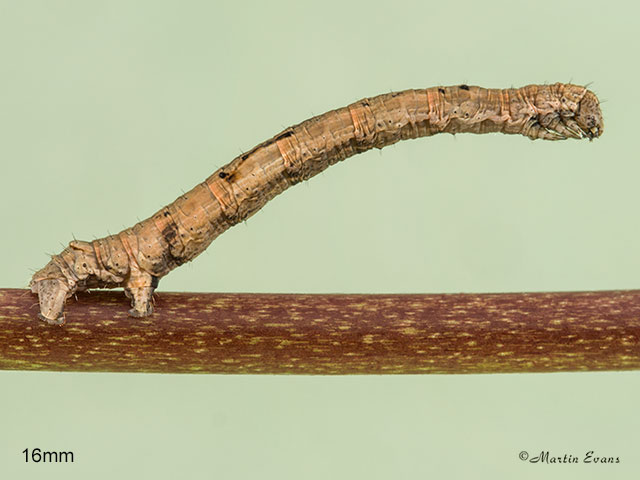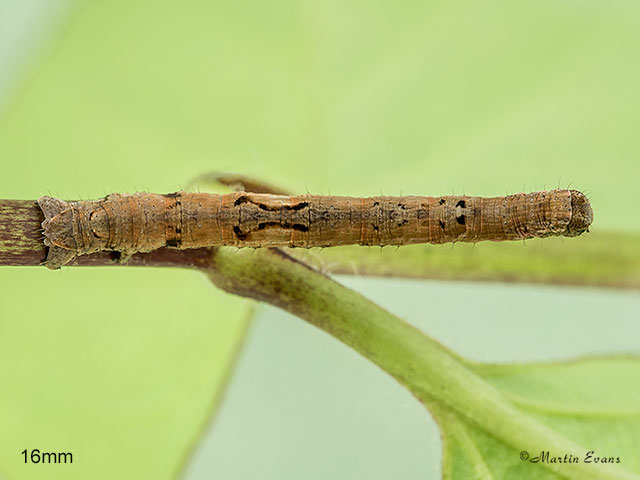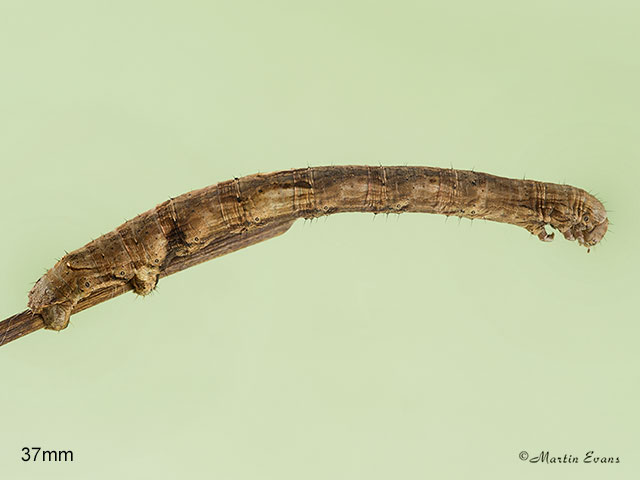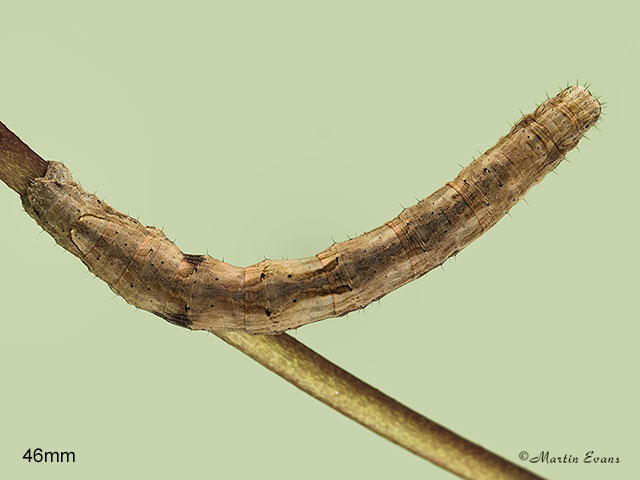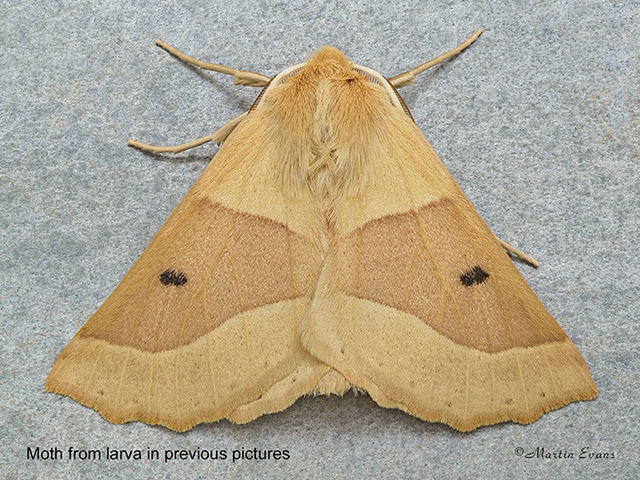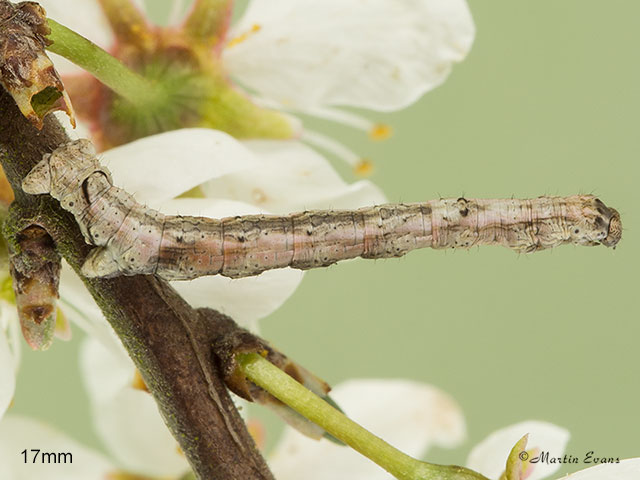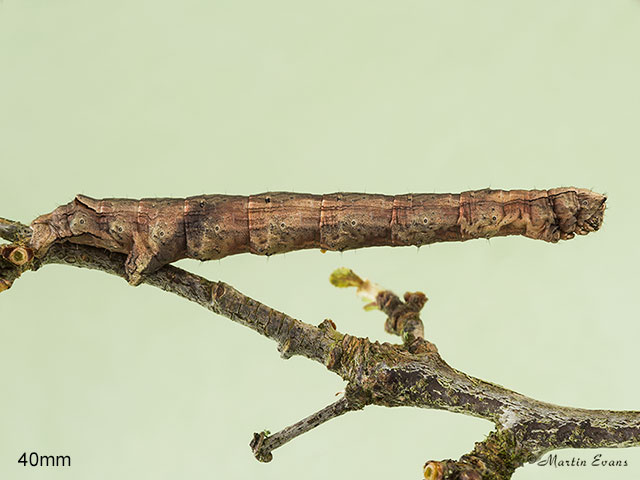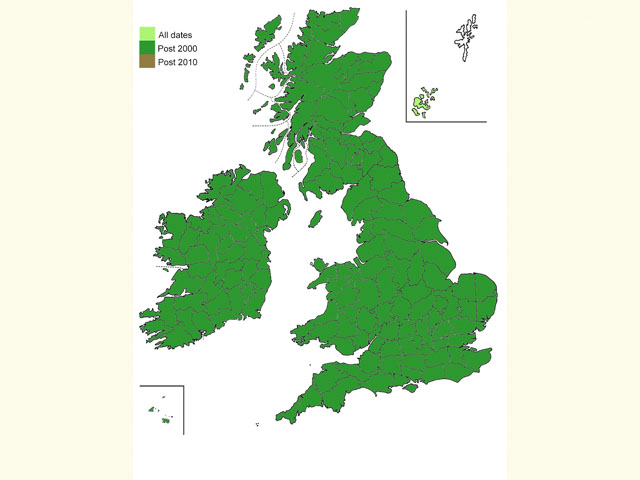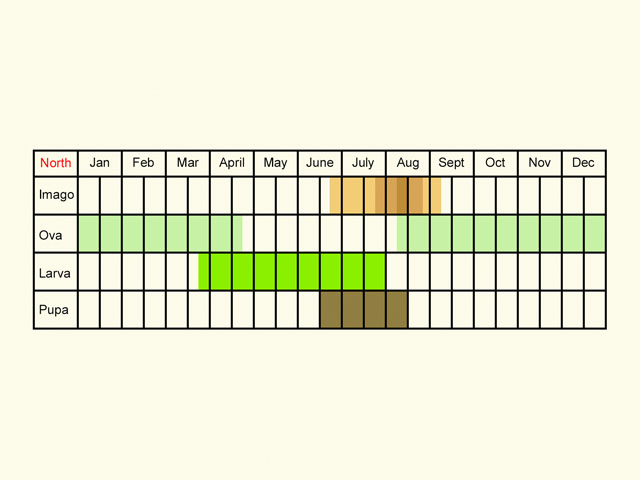Geometridae
70.241 Scalloped Oak Crocallis elinguaria (Linnaeus, 1758)
Common
Similar species: Scalloped Hazel Odontopera bidentata has more deeply indented scallops around the outer edge of the wings. Dusky Scalloped Oak Crocallis dardoinaria is usually less yellow/orange in colour and has a mark in the forewing made up of four smaller spots rather than a single (often elongated) spot. It also has many dark speckles across the forewing.
Forewing: 18 to 22mm
Habitats: Woodland, parkland, scrub, hedgerows and gardens.
Habits: The moth comes to light.
Foodplant: The larva feeds on sallows, oaks, Silver Birch, Downy Birch, Hawthorn, Blackthorn, Bilberry, Heather, Honeysuckle, Cotoneaster and other deciduous trees and shrubs. It probably pupates in a cocoon under moss or in loose soil.
On the European mainland the larva has also been recorded feeding on Alder, Aspen, limes, Wild Plum, Fly Honeysuckle and Bramble.

